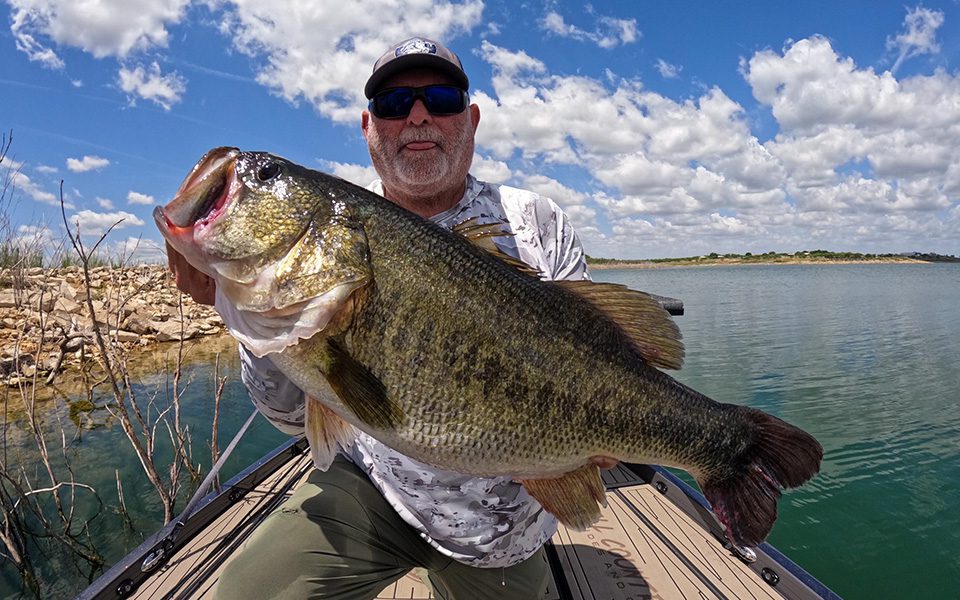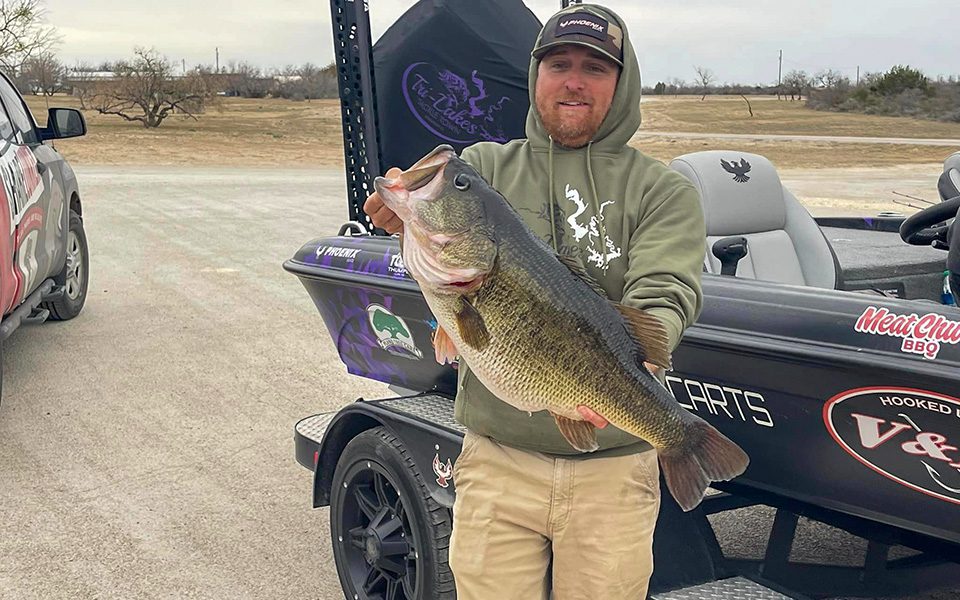By Nick Carter
If a truly giant largemouth bass is on your bucket list, make plans to visit O.H. Ivie Lake in Texas over the next few months. Last year, this 19,000-acre impoundment of the Colorado river burst onto the scene as the hottest big bass lake in the nation. A string of 17 monster largemouths from January through April kept O.H. Ivie in the headlines, and 10 of them were caught in February.
And when we say monster, we’re not talking about 8- to 10-pounders, we’re talking about 13-plus-pound behemoths. According to data from Toyota ShareLunker, Texas’s trophy bass recognition and breeding program, February is the time to catch a giant at this central Texas reservoir.
Bass are at their heaviest and most aggressive ahead of the spawn, when they are fat, feeding and full of eggs. Last February’s incredible streak was highlighted by an enormous 17.03-pounder that is the lake record and the eighth largest bass ever caught in Texas. Jason Conn caught it on Feb. 13, 2023, and he said the fish was even heavier before it started regurgitating shad in his livewell.
Moving into March and April last year, the trophy bass statistics were still pretty amazing—with 34 fish heavier than 8 pounds—but the giant fish tapered off. Five 13-plus-pounders were caught during those two months, and then no one registered another one until November, when Shawn Strength caught a 16.65-pound monster. The totals for 2023 were 75 fish heavier than 8 pounds and 18 heavier than 13 pounds. And the true total is potentially much more impressive, because these statistics include only the fish anglers bothered to register with ShareLunker.
So, why has the productivity of O.H. Ivie exploded over the last three or four years?
According to Texas Parks and Wildlife, intensive stocking of bass with Florida strain genetics is the secret ingredient. Florida strain genetics produce larger, faster-growing fish than the native northern strain genetics in the system. Part of the mission of the ShareLunker program is to breed trophy fish, and they do this by using 13-plus-pounders caught by anglers in their breeding program. It is estimated 75 to 85 percent of the bass in O.H. Ivie possess those Florida genetics. On top of that, weather played a role in the lake’s rise. Following a prolonged drought, heavy rain in the fall of 2018 raised water levels by more than 30 feet.
“It gave these bass pretty much unlimited food and space to grow,” said a ShareLunker representative, “and they just grew like crazy.”
Stay tuned. It’ll be interesting to see what America’s hottest big bass lake produces over the next four months, especially with all the added angler attention that comes with a bright hot spotlight.


